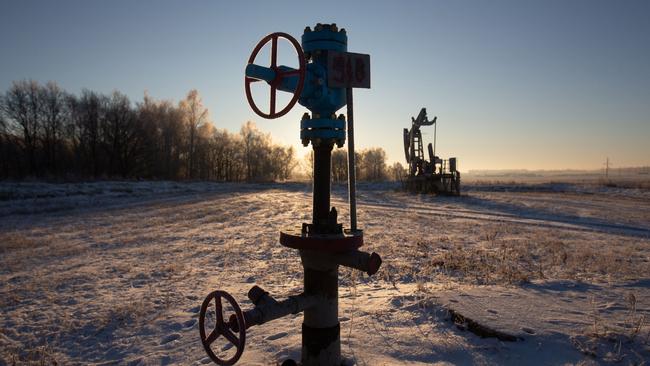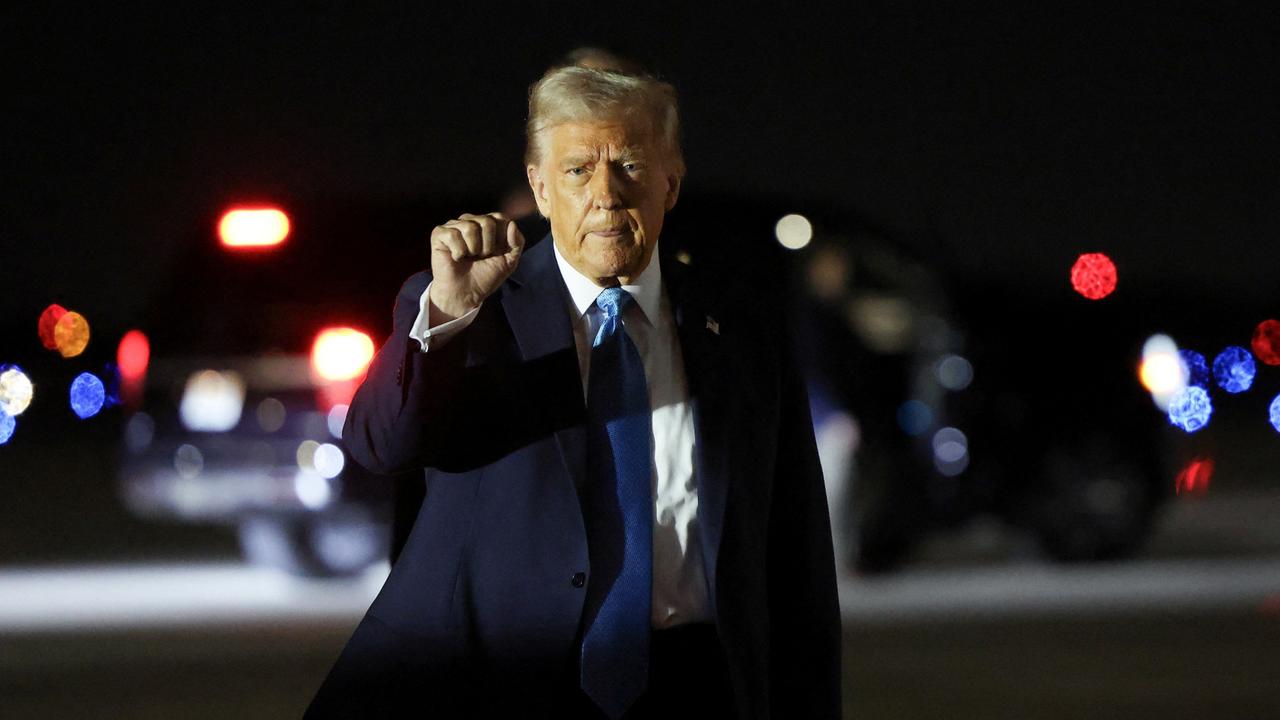Brent crude oil price hits 7-year high on Russian aggression in Ukraine
Escalating crisis in Ukraine threatens to disrupt flows of natural resources from Eastern Europe to world markets.

Oil, natural-gas and agricultural prices rose as escalating tensions over Ukraine threatened to disrupt flows of natural resources from Eastern Europe to world markets.
Futures for Brent crude, the benchmark in international energy markets, added $US1.45 a barrel, or 1.5 per cent, to settle at $US96.84 and earlier climbed to $US99.50, their highest level since 2014. In Europe, natural-gas prices rose 10 per cent to €80, equivalent to $US91.65, per megawatt-hour after Germany halted the Nord Stream 2 pipeline in response to Russian aggression against Ukraine.
The submarine pipe linking Russia to Germany has yet to funnel gas to customers of Gazprom PJSC, but traders worry the state energy company will cut exports via other routes if Nord Stream 2 is cancelled.
US natural-gas prices also rose on Tuesday night, though the move was less pronounced than in Europe. Futures gained US6.70c, or 1.5 per cent, to $US4.4980 per million British thermal units.
Prices for wheat, grown in large quantities in Russia and Ukraine, rose as well. Aluminium and nickel, of which Russia is a big producer, rose in early trading before shedding gains on the London Metal Exchange.
President Biden rolled out what he called a first round of sanctions on Tuesday night over Russian President Vladimir Putin’s movement of troops into two breakaway regions of Ukraine. The US penalties target two Russian financial institutions, Russia’s sovereign debt and elite individuals.
Mr Biden called Moscow’s moves the beginning of a Russian invasion of Ukraine, and the White House condemned Mr. Putin’s decision to recognise the independence of the two regions, Donetsk and Luhansk.
Elsewhere, Germany moved swiftly to stop certification of the controversial Nord Stream 2 pipeline. Long a source of friction between Berlin and Washington, the project had been awaiting approval from European regulators before it could carry gas under the Baltic Sea.
A pick-up in flows of gas from Russia to Europe is unlikely with Nord Stream 2 on hold, analysts and traders say. Without extra Russian gas, the region faces a battle to build adequate supplies of the power-generation and heating fuel before the 2022-23 winter. State supplier Gazprom PJSC reduced flows through alternative routes to Europe in recent months, a move that met its contractual commitments but also pushed prices to record highs. Last year, the Kremlin tied a rise in Russian exports to the start-up of Nord Stream 2.
The West faces a tricky balancing act in deciding which other restrictions to impose on Russia, and when. Hitting the sector that would most damage the Russian economy — oil and gas — would also cause the biggest problems in the US and Europe. Companies, governments and voters there already are grappling with the highest energy prices in years.
Natural-gas markets are highly exposed to any snags in flows from Russia. Europe met 38 per cent of its gas needs with imports from Russia in 2020, according to the most recent official data. Prices in northwestern Europe are almost five times as high as they were a year ago.
On Tuesday, Mr Putin told a gas conference that Russia would continue providing uninterrupted supplies of gas, according to a state news agency.
The first round of sanctions avoided measures that would directly disrupt Russian oil-and-gas exports. Traders and analysts say sanctions could reverberate through the Russian economy and commodity markets in unpredictable ways, for example by making it difficult for traders to finance and pay for cargoes of Russian fuel.
Crude prices have rallied to their highest prices since the 2014 shale-induced crash after demand snapped back from pandemic lows faster than production. Stockpiles have winnowed as producers in the Organisation of the Petroleum Exporting Countries, the U.S. and Russia itself either struggled to pump more oil or opted for restraint.
“I don’t think a full export ban is going to be imposed,” said Tamas Varga, an analyst at brokerage PVM Oil, citing high gasoline prices and the coming midterm elections in the US “The more important question is: How is Russia going to react? There is nothing that could prevent them to limit supplies to Europe or anywhere else in the world.”
There is also a risk of physical disruption to Russian oil supplies to Europe. Eastern and Central European refiners rely on Urals crude — the main grade of crude exported by Russia — flowing through the southern branch of the Druzhba pipeline, which runs through Ukraine to Slovakia, Hungary and the Czech Republic. In all, Europe imports 2.7 million barrels a day of Russian crude, and 1.1 million barrels a day of refined products, according to S&P Global Platts.
Russia is the third-biggest oil producer in the world, the single largest exporter of natural gas and a major producer of aluminium, nickel and other metals. Any interruption to Russian exports would strike at a vulnerable time for oil, gas and metal markets globally as buyers compete for scarce supplies.
Agricultural markets could also get up-ended by escalating hostilities in Ukraine and the West’s response to an invasion. Russia is the world’s fourth-biggest producer of wheat, if the European Union is counted as a single producer, according to US Department of Agriculture data. A blockade of Ukraine, meanwhile, could jeopardise sizeable exports of wheat and corn from Black Sea ports.
Nations in the Middle East such as Turkey, Egypt and Lebanon rely on Russia and Ukraine for a substantial portion of their wheat needs. Any disruption could lead to soaring prices for bread at a time when inflation is already rippling through the global economy.
Wheat futures rose 6 per cent to $US8.53 a bushel in Chicago on Tuesday, and corn prices gained 2.8 per cent to $US6.73 a bushel.
Additional reporting: Jenny Strasburg
The Wall Street Journal


